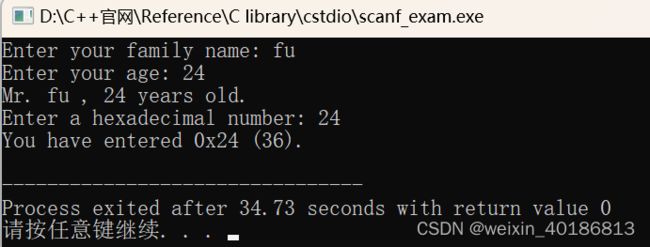- 0X JavaSE-- 并发编程(并发容器、ThreadLocal、线程池)
SunsPlanter
JavaSEjava
线程池什么是线程池线程池其实是一种池化的技术实现,池化技术的核心思想就是实现资源的复用,避免资源的重复创建和销毁带来的性能开销。线程池可以管理一堆线程,让线程执行完任务之后不进行销毁,而是继续去处理其它线程已经提交的任务。使用线程池的好处降低资源消耗。通过重复利用已创建的线程降低线程创建和销毁造成的消耗。提高响应速度。当任务到达时,任务可以不需要等到线程创建就能立即执行。提高线程的可管理性。线程是
- ASP.NET Core通过Websocket建立简单聊天室
什么是websocket?传统的HTTP协议是一个请求-响应协议,也即是由浏览器主动向服务器发起请求,随后服务器才能进行响应这个请求,再把数据发送给浏览器。也就是说,浏览器不主动发起请求,服务器是不能主动发送数据给浏览器的,很明显,这并不能满足实时聊天的需求。满足这个需求的解法总体来说有三种:轮询、长连接、Comet轮询:轮询是指浏览器通过JavaScript启动一个定时器,然后以固定的间隔给服务
- 【C#程序设计】教学讲义——第二章:简单C#程序设计
刘一哥GIS
《GIS程序设计》C#程序设计谭浩强面向对象类
教学目录2.1面向对象的概念2.2建立简单的应用程序2.3窗体和Label控件2.4文本框-属性2.5按钮控件本章小结2.1面向对象的概念2.1.1对象和类1.对象对象是客观世界中对象的模型化。对象是有着特殊数据(属性)与操作(行为)的实体,对象的操作(行为)称为方法。程序中的对象是模型化了的客观世界的对象,它是代码和数据的封装体,用数据表示属性,用代码(过程或函数)表示方法。一个程序对象的属性用
- C#哈希加密:原理、实现与应用
阿蒙Armon
C#工作中的应用c#哈希算法开发语言
C#哈希加密:原理、实现与应用在当今数字化时代,数据安全是每个应用程序都必须重视的问题。哈希加密作为一种重要的加密技术,在密码存储、数据完整性验证、数字签名等领域发挥着关键作用。本文将深入探讨C#中哈希加密的原理、常用算法以及实际应用,并通过代码示例展示如何在C#中实现哈希加密。一、哈希加密基础哈希加密(也称为哈希函数或散列函数)是一种将任意长度的输入数据转换为固定长度输出的算法。这个固定长度的输
- could not import google.golang.org/protobuf/proto
ezreal_pan
Go后端golang前端开发语言
背景import("encoding/json""testing""google.golang.org/protobuf/proto")在测试中需要使用proto,但是,import这个包之后,一直报couldnotimportgoogle.golang.org/protobuf/proto这个错误,尝试了各种方法,依然没有解决这个问题。临时方案执行gomodvendor这个命令。项目的目录下多了
- 工业控制系统安全综述
罗思付之技术屋
物联网及AI前沿技术专栏安全网络web安全
摘要工业控制系统除了应用于生产制造行业外,还广泛应用于交通、水利和电力等关键基础设施.随着工业数字化、网络化、智能化的推进,许多新技术应用于工业控制系统,提高了工业控制系统的智能化水平,但其也给工业控制系统的安全带来严峻的挑战.因此,工业控制系统的安全倍受研究人员的关注.为了让研究人员系统化地了解目前的研究进展,调研了近3年WebofScience核心数据库、EI数据库和CCF推荐网络与信息安全国
- Vxe-table @cell-click 事件中,传递给处理函数的入参对象
墨着染霜华
javascript前端html
在vxe-table的@cell-click事件中,传递给处理函数的对象包含了丰富的信息,可以帮助你了解用户点击的单元格的详细情况。根据vxe-table的文档和使用惯例,这个对象通常包含以下属性:主要属性row:当前行的数据对象。$rowIndex:当前行的索引(从0开始)。column:当前列的信息对象,其中包含:field:列绑定的数据字段名。title:列标题。等其他列配置项...$col
- JAVA springboot Access-Control-Allow-Origin
墨着染霜华
javaspringbootspring
response.setHeader("Access-Control-Allow-Origin","https:/your-domain.com");意思是:只有来自https:/your-domain.com的前端页面(即请求的来源Origin是这个域名),才能通过浏览器发起跨域请求访问这个接口区分大小写&完全匹配这个设置是完全匹配的,也就是说:https://epos.whbswdt.com
- Java LinkedList 详解
飞滕人生TYF
java算法数据结构javaLinkedList
在Java中,LinkedList是一个双向链表的实现,它是List接口的一个具体实现类,位于java.util包中。与其他常见的集合类(如ArrayList)不同,LinkedList基于链表数据结构,因此在元素的插入和删除操作上具有一定的优势。以下是对LinkedList的详细解析:1.LinkedList的定义和实现LinkedList是一个有序的集合,允许重复元素,并且实现了List接口以
- java 学习 底层代码 算法
好学且牛逼的马
java
#33写算法题黑马的视频争取简单的过一遍要考试啦密码的写底层代码秘密的底层代码有点长啊看不懂难找了几个视频课看看吧想看中文版jdkapi吧算了慢慢看先把几个顶级父类给看会了objectsystemstringstringbuilder算法单路递归packagecom.itheima.Recursion;publicclasssingleRecursion{ publicstaticvoidma
- Java web%10
好学且牛逼的马
java前端AI编程
%10新路线Javawebai笔记阶段时长内容Web前端基础2天HTML、CSS、JS、Vue3、AjaxWeb后端基础4天Maven、HTTP协议、SpringIOC、DI、MySQL、JDBC、MybatisWeb后端实战6天Tlias案例(基于案例讲解web开发的核心知识)Web后端进阶2天SpringAOP、SpringBoot原理、自定义Starter、Maven高级前端web实战4天V
- redis-cli 命令详解
戴国进
redisLuaredis-cli
命令使用:redis-cli[OPTIONS][cmd[arg[arg...]]]选项说明:-hServerhostname(default:127.0.0.1).ip地址-pServerport(default:6379).服务器端口号-sServersocket(overrideshostnameandport).-aPasswordtousewhenconnectingtotheserver
- 合规型区块链RWA系统解决方案报告——机构资产数字化的终极武器
Ashlee_guweng22346
区块链需求分析架构pythoneclipsec#git
(跨境金融科技解决方案白皮书)一、直击机构客户四大痛点痛点传统方案缺陷我们的破局点✖️跨境资产流动性差结算周期30+天,摩擦成本超8%▶️7×24h全球实时交易(速度提升90%)✖️合规成本飙升KYC/AML人工审核占成本35%+▶️自动化合规引擎(成本降低50%)✖️资产透明度缺失多层中介导致权属不清▶️链上全生命周期溯源(100%防篡改)✖️新型资产配置难非标资产难分割、难定价▶️碎片化代币发
- 提升异地网络性能的全面指南:QoS策略、CDN加速与WAN优化技术
北极光SD-WAN组网
网络
一、网络延迟与带宽优化:QoS策略与带宽聚合技术1.1QoS(服务质量)策略的核心功能QoS(QualityofService)是网络性能优化的核心技术,通过对网络流量进行分类和优先级分配,确保关键业务(如视频会议、语音通话)的低延迟和高可靠性。关键策略包括:流量分类与优先级分配:通过策略规则对不同种类的流量进行标记,将高优先级分配给实时性要求高的业务。拥塞管理:利用队列技术如CBWFQ(基于类的
- 1052. Linked List Sorting (25)
陈小旭
PAT
题目链接:http://www.patest.cn/contests/pat-a-practise/1052题目:Alinkedlistconsistsofaseriesofstructures,whicharenotnecessarilyadjacentinmemory.WeassumethateachstructurecontainsanintegerkeyandaNextpointertot
- 科伦坡证券交易所(CSE)定制的全栈系统开发报告
Ashlee_guweng22346
pythonjavaperldocker数据结构emacs算法
“全自动化交易平台”(CSE主席瓦吉拉·库拉提拉卡评价)的进化——订单处理延迟1Tbps)。容器化微服务:iSulad轻量容器引擎(内存开销6MB)实现Kubernetes秒级扩容,资源利用率提升70%,故障切换时间10ms,错失套利窗口。方案:鲲鹏低延迟引擎+InfiniBand网络。结果:时延降至0.5ms,套利收益年化提升22%。
- Java 中 LinkedList 的排序方法与性能比较
Java大师兄学大数据AI应用开发
AI人工智能与大数据应用开发AI实战java开发语言ai
Java中LinkedList的排序方法与性能比较关键词:JavaLinkedList、排序方法、性能比较、双向链表、时间复杂度、Collections.sort、Stream.sorted摘要:LinkedList是Java集合框架中常用的双向链表结构,适合频繁插入/删除操作,但排序时却常因特性限制导致性能问题。本文将从“火车车厢”的生活类比出发,逐步拆解LinkedList的排序原理,对比Co
- Java 中LinkedList 总结
一切顺势而行
java开发语言
406.根据身高重建队列力扣题目链接(opensnewwindow)假设有打乱顺序的一群人站成一个队列,数组people表示队列中一些人的属性(不一定按顺序)。每个people[i]=[hi,ki]表示第i个人的身高为hi,前面正好有ki个身高大于或等于hi的人。请你重新构造并返回输入数组people所表示的队列。返回的队列应该格式化为数组queue,其中queue[j]=[hj,kj]是队列中第
- Host ‘db01‘ is not allowed to connect to this MariaDB server 怎么解决?
teayear
云原生mariadb数据库云计算运维岗位运维技术
出现错误ERROR1130(HY000):Host'db01'isnotallowedtoconnecttothisMariaDBserver,表示当前用户test没有足够的权限从主机db01连接到MariaDB服务器。以下是逐步解决方案:1.检查用户权限登录MariaDB服务器(需本地或通过其他有权客户端),执行以下命令查看用户权限:SELECTuser,hostFROMmysql.userWH
- JAVA List<String> 用 stream转为 List<Long>
墨着染霜华
javalist
可以使用JavaStream将List转换为List,前提是这些字符串可以被正确解析为数字。ListlongList=strList.stream().flatMap(s->{try{returnStream.of(Long.parseLong(s));}catch(NumberFormatExceptione){returnStream.empty();}}).collect(Collector
- 稳定币技术全解:从货币锚定机制到区块链金融基础设施
Ashlee_guweng22346
游戏区块链金融架构人工智能自动化java
引言:稳定币的技术定位根据国际清算银行(BIS)2025年定义:稳定币是以法定资产或算法机制维持价值稳定的区块链代币,其本质是传统金融与加密技术的接口层。核心价值:解决加密货币波动性问题→成为DeFi生态的计价基准与结算工具第一章技术原理:稳定币如何实现“稳定”?1.1锚定机制的三类技术路径graphTBA[稳定币类型]-->B[法币储备型]A-->C[加密资产抵押型]A-->D[算法调控型]B-
- Java 集合list 手搓底层源码
好学且牛逼的马
算法
#32Java八股集合基础用法掌握速通小林不是很全老韩详细底层byd课程质量一般八股文听书算法题不会写byd密码的还没开始看双指针技巧秒杀七道链表题目|labuladong的算法笔记等等熬夜看笔记实现底层代码后面非常长但是也只写到了list完map和set明天写collection这段代码展示了Java集合框架的核心接口层次结构。`Collection`是整个集合框架的根接口,定义了集合操作的基本
- 嵌入式linux下基于boa cgic sqlite3的ajax web服务器搭建
モザイクカケラ
嵌入式linux-web嵌入式系统开发boacgicsqlite3嵌入式linuxajax
先上大家的资源全部亲测可用sqlite3数据库c语言常用接口应用实例sqlite3数据库交叉编译并移植到嵌入式开发环境步骤fprintf与stderr、stdout的使用Windows中IIS服务器被防火墙阻止导致外网无法访问sqlite3.OperationalError:unabletoopendatabasefileSQLiteDelete语句SQLite数据库中rowid使用基本操作交叉编
- antv点击节点设置选中状态不生效、选中某节点时取消选中其他节点
今天不要写bug
antvjsjavascript
正常触发选中节点来说是://节点点击this.graph.on('node:click',e=>{const{item}=ethis.graph.setItemState(item,'click',true)//设置选中状态})有些时候会不生效,或者想在点击某节点的时候,其他节点取消选中,遍历取消可能会有问题先遍历并取消所有节点的选择状态,然后再设置当前项为选中状态,但由于graph.setIte
- DTO、VO、POJO转换性能测试
ZuuuuYao
Java开发语言java
PO、DTO、VO、BO对象转换性能测试一、Java对象转换性能测试(一)测试对象mapstruct(二)测试对象modelmapper二测试代码(1)准备UserEntity(2)准备UserVO(3)编写mapstruct的映射器UserStructMapper(4)准备测试类(5)输出结果三、测试报告四、结论一、Java对象转换性能测试(一)测试对象mapstructMapstruct是一个
- VSCode更改程序编译之后生成文件的保存路径
一low永逸
安装IDEvscode
目录目标过程如何生成json代码其他参考目标想把程序文件和生成文件分开来,生成在当前文件的out文件夹过程在保存代码的文件夹下面再建一个保存生成文件的文件夹,我生成了out文件夹打开.vscode文件夹下面settings.json文件(这个json文件可以自己生成或复制过来,不影响使用)在settings.json中加入以下代码,我主要使用C++语言,所以只改这个,不同系统的shell语法不一样
- POJO/DTO/DO/EO/VO/BO/PO/AO的含义和使用
石头wang
Java基础/JUC/JVMpojodto
关于POJO/DTO/DO/EO/VO/BO/PO/AO本文讨论POJO/DTO/DO/EO/VO/BO/PO/AO的定义,另外讨论了这些xO在controller、service、dao/mapper层里的使用规范。另外还稍微讨论了controller中是否要“轻逻辑”,mapper接口的规范等等问题。前言在我们的java项目中存在各种xO的概念,如POJO/DTO/DO/EO/VO,还有些后端
- MyBatis逆向工程生成 (生成pojo、mapper.xml、mapper.java)
weixin_30701521
java数据库
MyBatis逆向工程生成mybatis需要程序员自己编写sql语句,mybatis官方提供逆向工程,可以针对单表自动生成mybatis执行所需要的代码(mapper.java、mapper.xml、pojo…),可以让程序员将更多的精力放在繁杂的业务逻辑上。企业实际开发中,常用的逆向工程方式:由数据库的表生成java代码。之所以强调单表两个字,是因为Mybatis逆向工程生成的Mapper所进行
- 【客户端排查】mac电脑怎么查看客户端的实时运行日志
前端程序媛-Tian
客户端electronelectron客户端日志
先退出客户端;打开访达里的应用程序;打开【显示包内容】;找到MacOS双击里面的终端程序;双击后,客户端会自动启动,且可以在终端中查看客户端的实时日志啦~
- Xcode安装及卸载
rs勿忘初心
xcodemacosXcode安装Xcode卸载
MacOS下卸载和安装Xcode卸载Xcode:MacOS下卸载Xcode,重新安装Xcode安装Xcode:https://developer.apple.com/download/more/
- Enum 枚举
120153216
enum枚举
原文地址:http://www.cnblogs.com/Kavlez/p/4268601.html Enumeration
于Java 1.5增加的enum type...enum type是由一组固定的常量组成的类型,比如四个季节、扑克花色。在出现enum type之前,通常用一组int常量表示枚举类型。比如这样:
public static final int APPLE_FUJI = 0
- Java8简明教程
bijian1013
javajdk1.8
Java 8已于2014年3月18日正式发布了,新版本带来了诸多改进,包括Lambda表达式、Streams、日期时间API等等。本文就带你领略Java 8的全新特性。
一.允许在接口中有默认方法实现
Java 8 允许我们使用default关键字,为接口声明添
- Oracle表维护 快速备份删除数据
cuisuqiang
oracle索引快速备份删除
我知道oracle表分区,不过那是数据库设计阶段的事情,目前是远水解不了近渴。
当前的数据库表,要求保留一个月数据,且表存在大量录入更新,不存在程序删除。
为了解决频繁查询和更新的瓶颈,我在oracle内根据需要创建了索引。但是随着数据量的增加,一个半月数据就要超千万,此时就算有索引,对高并发的查询和更新来说,让然有所拖累。
为了解决这个问题,我一般一个月会进行一次数据库维护,主要工作就是备
- java多态内存分析
麦田的设计者
java内存分析多态原理接口和抽象类
“ 时针如果可以回头,熟悉那张脸,重温嬉戏这乐园,墙壁的松脱涂鸦已经褪色才明白存在的价值归于记忆。街角小店尚存在吗?这大时代会不会牵挂,过去现在花开怎么会等待。
但有种意外不管痛不痛都有伤害,光阴远远离开,那笑声徘徊与脑海。但这一秒可笑不再可爱,当天心
- Xshell实现Windows上传文件到Linux主机
被触发
windows
经常有这样的需求,我们在Windows下载的软件包,如何上传到远程Linux主机上?还有如何从Linux主机下载软件包到Windows下;之前我的做法现在看来好笨好繁琐,不过也达到了目的,笨人有本方法嘛;
我是怎么操作的:
1、打开一台本地Linux虚拟机,使用mount 挂载Windows的共享文件夹到Linux上,然后拷贝数据到Linux虚拟机里面;(经常第一步都不顺利,无法挂载Windo
- 类的加载ClassLoader
肆无忌惮_
ClassLoader
类加载器ClassLoader是用来将java的类加载到虚拟机中,类加载器负责读取class字节文件到内存中,并将它转为Class的对象(类对象),通过此实例的 newInstance()方法就可以创建出该类的一个对象。
其中重要的方法为findClass(String name)。
如何写一个自己的类加载器呢?
首先写一个便于测试的类Student
- html5写的玫瑰花
知了ing
html5
<html>
<head>
<title>I Love You!</title>
<meta charset="utf-8" />
</head>
<body>
<canvas id="c"></canvas>
- google的ConcurrentLinkedHashmap源代码解析
矮蛋蛋
LRU
原文地址:
http://janeky.iteye.com/blog/1534352
简述
ConcurrentLinkedHashMap 是google团队提供的一个容器。它有什么用呢?其实它本身是对
ConcurrentHashMap的封装,可以用来实现一个基于LRU策略的缓存。详细介绍可以参见
http://code.google.com/p/concurrentlinke
- webservice获取访问服务的ip地址
alleni123
webservice
1. 首先注入javax.xml.ws.WebServiceContext,
@Resource
private WebServiceContext context;
2. 在方法中获取交换请求的对象。
javax.xml.ws.handler.MessageContext mc=context.getMessageContext();
com.sun.net.http
- 菜鸟的java基础提升之道——————>是否值得拥有
百合不是茶
1,c++,java是面向对象编程的语言,将万事万物都看成是对象;java做一件事情关注的是人物,java是c++继承过来的,java没有直接更改地址的权限但是可以通过引用来传值操作地址,java也没有c++中繁琐的操作,java以其优越的可移植型,平台的安全型,高效性赢得了广泛的认同,全世界越来越多的人去学习java,我也是其中的一员
java组成:
- 通过修改Linux服务自动启动指定应用程序
bijian1013
linux
Linux中修改系统服务的命令是chkconfig (check config),命令的详细解释如下: chkconfig
功能说明:检查,设置系统的各种服务。
语 法:chkconfig [ -- add][ -- del][ -- list][系统服务] 或 chkconfig [ -- level <</SPAN>
- spring拦截器的一个简单实例
bijian1013
javaspring拦截器Interceptor
Purview接口
package aop;
public interface Purview {
void checkLogin();
}
Purview接口的实现类PurviesImpl.java
package aop;
public class PurviewImpl implements Purview {
public void check
- [Velocity二]自定义Velocity指令
bit1129
velocity
什么是Velocity指令
在Velocity中,#set,#if, #foreach, #elseif, #parse等,以#开头的称之为指令,Velocity内置的这些指令可以用来做赋值,条件判断,循环控制等脚本语言必备的逻辑控制等语句,Velocity的指令是可扩展的,即用户可以根据实际的需要自定义Velocity指令
自定义指令(Directive)的一般步骤
&nbs
- 【Hive十】Programming Hive学习笔记
bit1129
programming
第二章 Getting Started
1.Hive最大的局限性是什么?一是不支持行级别的增删改(insert, delete, update)二是查询性能非常差(基于Hadoop MapReduce),不适合延迟小的交互式任务三是不支持事务2. Hive MetaStore是干什么的?Hive persists table schemas and other system metadata.
- nginx有选择性进行限制
ronin47
nginx 动静 限制
http {
limit_conn_zone $binary_remote_addr zone=addr:10m;
limit_req_zone $binary_remote_addr zone=one:10m rate=5r/s;...
server {...
location ~.*\.(gif|png|css|js|icon)$ {
- java-4.-在二元树中找出和为某一值的所有路径 .
bylijinnan
java
/*
* 0.use a TwoWayLinkedList to store the path.when the node can't be path,you should/can delete it.
* 1.curSum==exceptedSum:if the lastNode is TreeNode,printPath();delete the node otherwise
- Netty学习笔记
bylijinnan
javanetty
本文是阅读以下两篇文章时:
http://seeallhearall.blogspot.com/2012/05/netty-tutorial-part-1-introduction-to.html
http://seeallhearall.blogspot.com/2012/06/netty-tutorial-part-15-on-channel.html
我的一些笔记
===
- js获取项目路径
cngolon
js
//js获取项目根路径,如: http://localhost:8083/uimcardprj
function getRootPath(){
//获取当前网址,如: http://localhost:8083/uimcardprj/share/meun.jsp
var curWwwPath=window.document.locati
- oracle 的性能优化
cuishikuan
oracleSQL Server
在网上搜索了一些Oracle性能优化的文章,为了更加深层次的巩固[边写边记],也为了可以随时查看,所以发表这篇文章。
1.ORACLE采用自下而上的顺序解析WHERE子句,根据这个原理,表之间的连接必须写在其他WHERE条件之前,那些可以过滤掉最大数量记录的条件必须写在WHERE子句的末尾。(这点本人曾经做过实例验证过,的确如此哦!
- Shell变量和数组使用详解
daizj
linuxshell变量数组
Shell 变量
定义变量时,变量名不加美元符号($,PHP语言中变量需要),如:
your_name="w3cschool.cc"
注意,变量名和等号之间不能有空格,这可能和你熟悉的所有编程语言都不一样。同时,变量名的命名须遵循如下规则:
首个字符必须为字母(a-z,A-Z)。
中间不能有空格,可以使用下划线(_)。
不能使用标点符号。
不能使用ba
- 编程中的一些概念,KISS、DRY、MVC、OOP、REST
dcj3sjt126com
REST
KISS、DRY、MVC、OOP、REST (1)KISS是指Keep It Simple,Stupid(摘自wikipedia),指设计时要坚持简约原则,避免不必要的复杂化。 (2)DRY是指Don't Repeat Yourself(摘自wikipedia),特指在程序设计以及计算中避免重复代码,因为这样会降低灵活性、简洁性,并且可能导致代码之间的矛盾。 (3)OOP 即Object-Orie
- [Android]设置Activity为全屏显示的两种方法
dcj3sjt126com
Activity
1. 方法1:AndroidManifest.xml 里,Activity的 android:theme 指定为" @android:style/Theme.NoTitleBar.Fullscreen" 示例: <application
- solrcloud 部署方式比较
eksliang
solrCloud
solrcloud 的部署其实有两种方式可选,那么我们在实践开发中应该怎样选择呢? 第一种:当启动solr服务器时,内嵌的启动一个Zookeeper服务器,然后将这些内嵌的Zookeeper服务器组成一个集群。 第二种:将Zookeeper服务器独立的配置一个集群,然后将solr交给Zookeeper进行管理
谈谈第一种:每启动一个solr服务器就内嵌的启动一个Zoo
- Java synchronized关键字详解
gqdy365
synchronized
转载自:http://www.cnblogs.com/mengdd/archive/2013/02/16/2913806.html
多线程的同步机制对资源进行加锁,使得在同一个时间,只有一个线程可以进行操作,同步用以解决多个线程同时访问时可能出现的问题。
同步机制可以使用synchronized关键字实现。
当synchronized关键字修饰一个方法的时候,该方法叫做同步方法。
当s
- js实现登录时记住用户名
hw1287789687
记住我记住密码cookie记住用户名记住账号
在页面中如何获取cookie值呢?
如果是JSP的话,可以通过servlet的对象request 获取cookie,可以
参考:http://hw1287789687.iteye.com/blog/2050040
如果要求登录页面是html呢?html页面中如何获取cookie呢?
直接上代码了
页面:loginInput.html
代码:
<!DOCTYPE html PUB
- 开发者必备的 Chrome 扩展
justjavac
chrome
Firebug:不用多介绍了吧https://chrome.google.com/webstore/detail/bmagokdooijbeehmkpknfglimnifench
ChromeSnifferPlus:Chrome 探测器,可以探测正在使用的开源软件或者 js 类库https://chrome.google.com/webstore/detail/chrome-sniffer-pl
- 算法机试题
李亚飞
java算法机试题
在面试机试时,遇到一个算法题,当时没能写出来,最后是同学帮忙解决的。
这道题大致意思是:输入一个数,比如4,。这时会输出:
&n
- 正确配置Linux系统ulimit值
字符串
ulimit
在Linux下面部 署应用的时候,有时候会遇上Socket/File: Can’t open so many files的问题;这个值也会影响服务器的最大并发数,其实Linux是有文件句柄限制的,而且Linux默认不是很高,一般都是1024,生产服务器用 其实很容易就达到这个数量。下面说的是,如何通过正解配置来改正这个系统默认值。因为这个问题是我配置Nginx+php5时遇到了,所以我将这篇归纳进
- hibernate调用返回游标的存储过程
Supanccy2013
javaDAOoracleHibernatejdbc
注:原创作品,转载请注明出处。
上篇博文介绍的是hibernate调用返回单值的存储过程,本片博文说的是hibernate调用返回游标的存储过程。
此此扁博文的存储过程的功能相当于是jdbc调用select 的作用。
1,创建oracle中的包,并在该包中创建的游标类型。
---创建oracle的程
- Spring 4.2新特性-更简单的Application Event
wiselyman
application
1.1 Application Event
Spring 4.1的写法请参考10点睛Spring4.1-Application Event
请对比10点睛Spring4.1-Application Event
使用一个@EventListener取代了实现ApplicationListener接口,使耦合度降低;
1.2 示例
包依赖
<p
